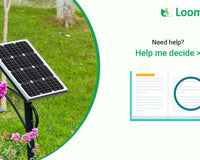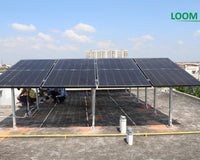We all must have heard the term ‘Tier Cities’ and it does make the normal word ‘city’ complex by keeping us wondering, “what does it mean by tier 1, 2, 3 and more city?” In this article we have jot down all the information that is related for top tier cities and how do they gain these numbers.
What is a Tier city?
The cities are majorly classified in two categories that is in between tiers and in between urban and rural category. In today’s article we will learn about the tier categories of the cities. All the cities in India have been categorized as tier cities. The tier word provides them category for better understanding of the availabilities of social and business facilities and the population census mark. The government classifies the tier level in cities.
What are Tier 1 cities in India?
A tier 1 city has all the facilities i.e., from basic to advance in all the sectors such as health and infrastructure, business and education, science and technology, etc. another factor to recognize a tier 1 city is its population. If the population is 1 lakh and over, the city will be considered as the tier 1 city. Currently there are 8 tier cities in India; Bangalore, Delhi, Hyderabad, Chennai, Ahmedabad, Kolkata, Mumbai, and Pune.
How many Tier 1 cities are there in India?
These cities are the most expensive cities in India with every sector is peaking and working with its full capacity.
| Si. No. | Tier 1 Cities in India |
| 1 | Bangalore |
| 2 | Delhi |
| 3 | Chennai |
| 4 | Hyderabad |
| 5 | Mumbai |
| 6 | Pune |
| 7 | Kolkata |
| 8 | Ahmedabad |
What are Tier 2 cities in India?
A tier 2 city has the basic to intermediate facilities and has a population mark in between 50,000 to 99,999. As per the current records, India has 97 tier 2 cities. Some of the top tier 2 cities are Amritsar, Bhopal, Bhubaneswar, Chandigarh, Faridabad, Jaipur, Lucknow, Raipur, Surat, Agra, etc.
How many Tier 2 cities are there in India?
These cities are the growing cities, where all the available sectors are growing with a moderate rate and are developing to hit peak levels somewhere in near future.
| Si. No. | Tier 2 Cities in India |
| 1 | Amritsar |
| 2 | Bhopal |
| 3 | Bhubaneswar |
| 4 | Chandigarh |
| 5 | Faridabad |
| 6 | Ghaziabad |
| 7 | Jamshedpur |
| 8 | Jaipur |
| 9 | Kochi |
| 10 | Lucknow |
| 11 | Nagpur |
| 12 | Patna |
| 13 | Raipur |
| 14 | Surat |
| 15 | Visakhapatnam |
| 16 | Agra |
| 17 | Ajmer |
| 18 | Kanpur |
| 19 | Mysuru |
| 20 | Srinagar |
What are Tier 3 cities in India?
Unlike tier 2 or tier 1 city, a tier 3 city has basic amenities of housing, education, health, business, infrastructure, etc. these cities have a population mark in between 20,000 to 49,999. These cities have people who have migrated from rural areas or nearby town or villages for better livelihood.
How many Tier 3 cities are there in India?
These cities are the paramount of growth and these cities are always seen as the new mega projects of a state. As the new projects and sectors are projected to be built with various jobs and amenities.
| Si. No. | Tier 3 Cities in India |
| 1 | Etawah |
| 2 | Roorkee |
| 3 | Rajamundry |
| 4 | Bhatinda |
| 5 | Hajipur |
| 6 | Rohtak |
| 7 | Hosur |
| 8 | Gandhinagar |
| 9 | Junagadh |
| 10 | Udaipur |
| 11 | Salem |
| 12 | Jhansi |
| 13 | Madurai |
| 14 | Vijaywada |
| 15 | Meerut |
| 16 | Mathura |
| 17 | Bikaner |
| 18 | Cuttack |
| 19 | Vijayawada |
| 20 | Nashik |
What are Tier 4 cities in India?
A tier 4 city is usually considered as a town or a group of clustered villages with a living population in between 10,000 to 19,999. These cities have very basic amenities such as small hospitals, schools, government bodies, small scale businesses, very basic infrastructure, etc.
How many Tier 4 cities are there in India?
These cities have people coming from small villages to find better amenities. Some of the top tier 4 cities are Datai, Gangtok, Banswara, etc.
| Si. No. | Tier 4 Cities in India |
| 1 | Banswara |
| 2 | Bhadreswar |
| 3 | Chilakaluripet |
| 4 | Datia |
| 5 | Gangtok |
| 6 | Kalyani |
| 7 | Kapurthala |
| 8 | Kasganj |
| 9 | Nagda |
| 10 | Sujangarh |
Solar Solution for Tier 1 cities in India
a. 50 kW Rooftop Solar System
A 50kW solar system is the minimum power output solar system available in India for group housing society. This system is an ‘On Grid Solar System’ which is directly connected with the grid power supply provided by the local DISCOM (Distribution Company). This solar system has 3 major components: Solar Panels, GTI Solar Inverter and Balancing of Solar System. The power generation capacity for a 50 kW solar system in 78,289 kWh (Units) per year, which can reduce the electricity bill by up to 7.5 lakh rupees over the year.
- Investment: Rs. 25,00,000 to 27,50,000
- Generation: 78,289 kWh/Year* (Units)
- Reduce Electricity Bill: Rs. 7,82,890 per year
- Return on Investment (RoI): 3.19 – 3.51 years
- Annual Maintenance Charge (AMC): Rs. 50,000 – 55,000/Year* (Up to 2% of initial investment per year)
Know more: Book Engineer Visit on www.loomsolar.com
Solar Solution for Tier 2 cities in India
a. 5kW On Grid Solar System
This is for the tier 2 cities where the power supply is abrupt and the need for an exponential growth is higher. The available solar system in 5 kW category is ‘On Grid Solar System’, which is connected directly with the grid power supply and it can also be used as a power supply circuit from home to the grid in return for some electricity bill wavier. The 5kW solar system can run all the basic to medium to heavy electronic equipment such as water motor, AC, Electric Vehicle Charging, etc.
- Investment: Rs. 3,00,000 to 3,50,000
- Generation: 7,667 kWh/Year* (Units)
- Reduce Electricity Bill: Rs. 53,669 per year
- Return on Investment (RoI): 5.58 – 6.52 years
- Annual Maintenance Charge (AMC): Rs. 6,000 – 7,000/Year* (Up to 2% of initial investment per year)
Know more: Book Engineer Visit on www.loomsolar.com
Solar Solution for Tier 3 cities in India
a. 3kW On Grid Solar System
The solar solution for tier 3 cities who are in the initial stage of growth and development. The best type of solar system for tier 3 cities is again an ‘On Grid Solar System’ which is best suited for the areas where power supply is abrupt but is available. The 3kW solar system can run basic and medium category electronic equipment such as washing machine, refrigerator, lights, fans, TV, etc. and other basic house hold equipment.
- Investment: Rs. 1,80,000 to 2,10,000
- Generation: 4,683 kWh/Year* (Units)
- Reduce Electricity Bill: Rs. 32,781 per year
- Return on Investment (RoI): 5.49 – 6.40 years
- Annual Maintenance Charge (AMC): Rs. 3,600 – 4,200/Year* (Up to 2% of initial investment per year)
Know more: Book Engineer Visit on www.loomsolar.com
Solar Solution for Tier 4 cities in India
a. 1kW Rooftop Solar System
The tier 4 cities are the cities with less amenities, but all the basic amenities and needs are available and the problem of power supply is always constant. The solution to this is the 1kW solar system which can run all the basic household appliances such as lights, TV, fans, etc.
- Investment: Rs. 60,000 to 1,05,000
- Generation: 1,171 kWh/Year* (Units)
- Reduce Electricity Bill: Rs. 8,197 per year
- Return on Investment (RoI): 7.31 – 12.80 years
- Annual Maintenance Charge (AMC): Rs. 1,200 – 2,100/Year* (Up to 2% of initial investment per year)
Know more: Buy Solar System on www.loomsolar.com
Conclusion
Wheatear be it a tier 1 city or tier 4, the need for constant power supply is constant. The installation of a solar system is a must in today’s high price world where everything is becoming costlier. The usage of 1 kW (the minimum) can save up to 8,000 rupees in an year with high ROI cost. This proves that the usage of solar system is a the best investment one can ever make.













1 comment
Reese Morebi
We can help you solve all HACKING RELATED PROBLEMS
●Hacking of all social media accounts
●Spying on cheating partner
●Retrieving of lost Cryptocurrency
●Data alteration
●Finding of lost phone
●Clearing/paying off of mortgage/loan
●Increasing of credit score
●Bitcoin mining
●Tracking of location
●Hacking of cell phone/other devices
●Block out or track down hackers
Secure yourself now!!!
Contact: cyberhelpdesk88@gmail.com
WhatsApp: +1 (209) 809-0176
Telegram: +1 (209) 809-0176